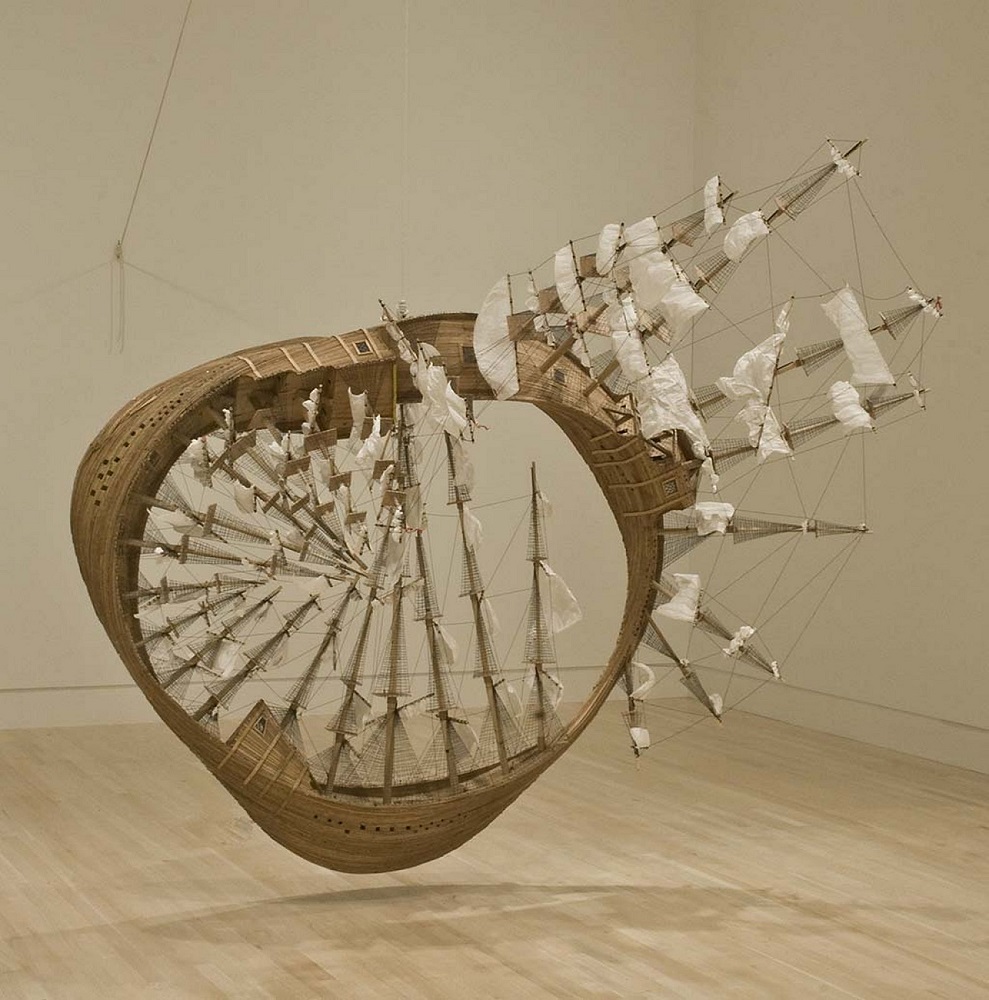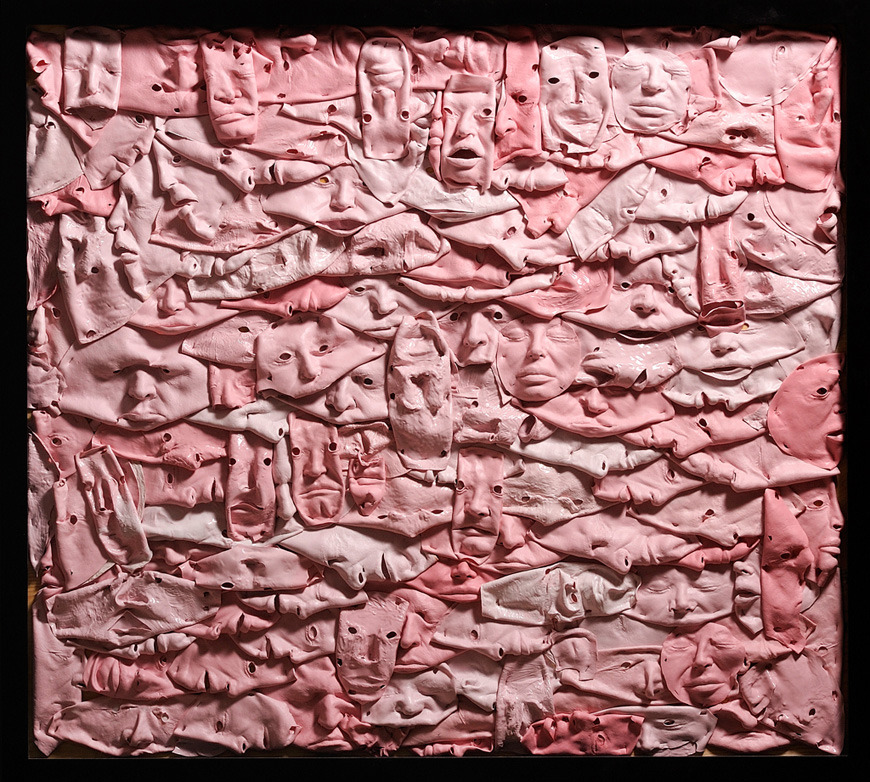


ARAKAWA + GINS
Yoro Park – Site of Reversible Destiny
“The couple first fully explored Reversible Destiny in what is regarded as their seminal gallery piece, “The Mechanism of Meaning,” an ever-evolving manifesto-cum-artwork begun in 1963, comprising 80 panels that they refined and added to over decades, many of them high-concept diagrams and puzzles with instructions and text (“A Mnemonic Device for Forgetting,” “Think One, Say Two”), made primarily of acrylic and mixed media on canvas. In an accompanying précis to the work, which was exhibited at the Guggenheim in 1997, they prescribed “no more irretrievable disappearances” and declared death “old-fashioned.” Critical opinion differs on how seriously the pair, whose work is in the collection of the Museum of Modern Art and Paris’s Centre Pompidou, took the grandiose quest to end death. But if it was intended as metaphor, neither of them ever let on. Indeed, though Arakawa himself died at 73, in 2010, and Gins four years later, at the age of 72, defying death became the defining work of their lives.”

Mark Dorf
Contours
Contours proposes a distancing through de-familiarization of what has become concrete by way of image and language. Active contradiction and abstraction are central to the works through a mixture of variables often seen in opposition or as dis-harmonious. Through the presentation of puzzling symbols, both familiar and skewed, a legible illegibility is produced: information being transmitted, but the immediate read obscured and hidden from sight. Through this, current sight-lines are made visible allowing for critical reflection, while simultaneously revealing the flexibility of language and image in order to engender the possibility of alternative understandings of the world: a crucial consideration in context of our contemporary global social and political shifts.
video

PLAYDEAD
Limbo
Arnt Jensen
File Festival
FILE GAMES
Limbo is a 2D sidescroller, incorporating the physics system Box2D to govern environmental objects and the player character. The player guides an unnamed boy through dangerous environments and traps as he searches for his sister. The developer built the game’s puzzles expecting the player to fail before finding the correct solution. Playdead called the style of play “trial and death“, and used gruesome imagery for the boy’s deaths to steer the player from unworkable solutions.

TIM HAWKINSON
蒂姆·霍金森
ティム·ホーキンソン
تيم هاوكينسون
Möbius Ship
The ambitious and imaginative structure of Hawkinson’s sculpture offers an uncanny visual metaphor for Melville’s epic tale, which is often considered the ultimate American novel. Möbius Ship also humorously refers to the mathematical concept of the Möbius Strip. Named after a nineteenth-century astronomer and mathematician, the Möbius Strip is a surface that has only one side, and exists as a continuous curve. Its simple yet complex spatial configuration presents a visual puzzle that parallels Hawkinson’s transformation of the mundane materials into something unexpected.

Suguru Goto
L’homme transcendé
Suguru Goto explore l’extension des potentialités dans la relation homme-machine. Ses performances joue sur l’interaction entre la représentation vidéo de corps virtuels et les vrais corps présents sur la scène, qui peuvent grâce au BodySuit, transformer ces images en temps réel. Un puzzle est créé autour des différences et des ressemblances entre le vrai corps et le corps virtuel.

BROOKE SHADEN
I use locations that are accessible to most people, props that are inexpensive and readily available, and a wardrobe that I mainly find at thrift stores. It’s what I do with these individual pieces of the puzzle that makes the image come together as something distinctive and different to our reality.

Amanita Design
Samorost 3
Prague-based Amanita Design, creators of the award-winning Mechinarium, recently released what may be their best game yet: Samorost 3. This deeply immersive puzzle game spans the ecosystems of 9 unusual planets as you encounter strange inhabitants and unlock increasingly complex secrets to advance to the next level. Amanita Design’s approach to creating completely non-verbal/non-textual games relies heavily on intuition, sound design, and symbolism to create environments that are practically interactive artworks.

Fabien Nissels
blocks
All of the pieces to the puzzle are there, but Switzerland-based artist Fabien Nissels organizes them into various wacky and nonsensical arrangements in his project, entitled Blocks. Nissels has taken a typically familiar object—the human body—and encourages his viewers to reinterpret this everyday thing in all of its unexpected new forms.

MATIJA ČOP
Matija voulait créer des vêtements qui s’inspiraient de types historiques sans s’appuyer sur des techniques de construction traditionnelles. Il s’est consciemment abstenu de tricoter, de coudre ou d’adhérer pour développer un système expérimental de fabrication: les scans 3D du corps sont manipulés à l’aide d’un logiciel de modélisation, transposés en motifs découpés au laser 2D, puis rationalisés à travers des scripts en formes qui peuvent être imbriquées comme un puzzle. pièces. L’objet résultant est un polyèdre complexe sans aucune couture. Plus important encore, le processus qui le crée est une variation entièrement originale du tissage avec des possibilités illimitées pour un design novateur et une nouvelle construction. En associant manuellement des centaines de pièces uniques découpées au laser à un savoir-faire techno-couture, il rend tangible une pensée ambitieuse et intégrée. L’œuvre de Matija esthétise la curiosité en s’efforçant constamment d’authentifier la possibilité d’une véritable innovation dans la mode contemporaine.

Matija Čop
Matija wanted to create garments that drew upon historical types without relying on traditional techniques of construction. He consciously abstained from knitting, sewing, or adhesion to develop an experimental system of fabrication: 3D scans of the body are manipulated using modelling software, transposed into 2D laser-cut patterns, and then rationalised through scripts into shapes that can be interlocked like puzzle pieces. The resultant object is a complex polyhedron without any seams. More significantly, the process that creates it is an entirely original variation of weaving with unlimited possibilities for novel design and new construction. Manually interlocking hundreds of unique laser-cut pieces with techno-couture craftsmanship, he makes ambitious and integrated thought tangible. Matija’s work aestheticises curiosity by striving constantly to authenticate the possibility of genuine innovation in contemporary fashion.

